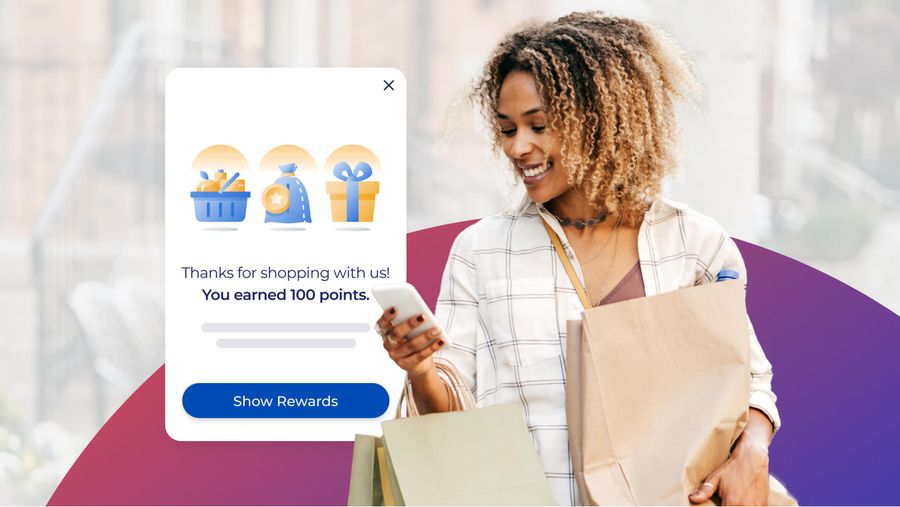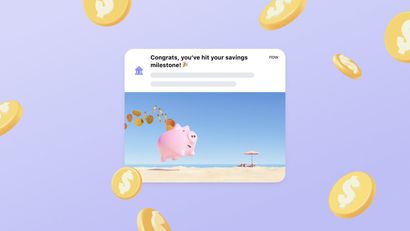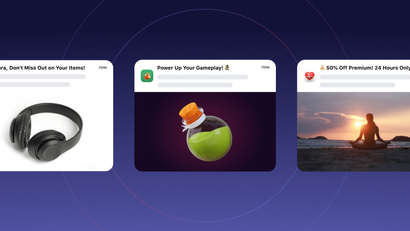What is a mobile-first loyalty program?
A mobile-first loyalty program is a way to incentivize long-term customer engagement by rewarding customers for repeated interactions with your brand. App-based loyalty programs can be modeled with a variety of tactics such as memberships, points, and other incentives.
Giving users something extra for their existing engagement with your app is an enticing way to make them feel appreciated and benefitted by your brand, which in turn keeps them coming back to spend and convert on your platform.
Why do Loyalty programs work?
When users feel like they are gaining something extra as a result of their engagement with your offerings, they are more likely to enthusiastically re-engage with your platform to participate in your program and spend more time and money with your business in general.
Common ways that mobile apps model successful loyalty programs include providing points, offering achievements, offering punchcards, creating hidden or special offers, or creating tiered loyalty programs. Different types of loyalty and rewards programs can benefit apps in different verticals.
Why does your mobile app need a loyalty program?
Creating a More Cohesive User Experience
With mobile loyalty programs, your app can better fuse your online, mobile, and/or in-person experiences.
Let’s say you’re a retail app, for instance. Maybe you provide an app-based loyalty program in addition to your mobile shopping interface. You could provide card management as a part of your app, which would allow users to leverage your rewards program within the app as well as online and in person.
Strengthen Customer Relationships
Marketing psychology shows that when you offer users incentives and provide additional value, it builds trust with users, because they feel that they are receiving something extra from you when they accumulate points or receive special rewards.
According to Shopify, 84 percent of consumers reported that they’d be more likely to return to a brand that offers a loyalty program and 66 percent of consumers say that earning rewards actually changes their spending behavior.
Creating Community
Humans are social creatures motivated by group affiliations. That may be why joining a like-minded community is an incentive for 47 percent of consumers to remain loyal to the brand.
For instance, your airline app may frame customer loyalty as a “high-flyers” club promoting exclusivity among members.
4 Tips for executing a mobile app loyalty and rewards programs
1) Know What type of Loyalty Program to Implement
Loyalty programs come in different shapes and Sizes. Here are a few common models you can leverage..
Points-Based
In this type of loyalty model, users accumulate rewards points that they earn by taking certain actions, such as placing their first order, referring a friend, completing a certain number of purchases, sharing on social, and more. Users can then spend the points they’ve accumulated within your app. For instance, users of your gaming app might earn points for inviting friends to your platform, after which they can acquire new in-game accessories to show off to other game players.
Loyalty Tiers
Another common way to model your app-based loyalty program is by creating a series of rewards tiers, similar to subscription tiers, within which users receive different sets of benefits. To qualify for different tiers, your users may need to reach certain engagement or conversion criteria. For instance, users of a social app may qualify for your “Gold” rewards tier after they’ve created ten videos with over ten thousand cumulative views. Bundled loyalty benefits systems can include shipping perks, free items, exclusive product offerings, or priority access to new products.
Fee-Based
this type of loyalty program is similar to a renewable paid subscription. Paid loyalty programs give customers a bundle of benefits based on a single time or recurring fee that members pay. It may be harder to drive adoption for paid loyalty models n contrast to other loyalty models you could implement.
However, studies show that paid loyalty programs can be highly valuable in that they successfully keep users on-platform, as users who directly paying fo a heightened in-app experience are more likely to re-engage. In this way, they can have a snowball effect for your engagement and retention metrics.
2) Personalize Your Loyalty Offerings
Customer expectations are increasing, and mobile loyalty and rewards programs are an excellent way to elevate your app’s level of customization. As user expectations for personalization rise, so too does their expectation of loyalty and rewards experiences. Now, companies collect more data and optimize their shopping experiences for different audience segments, a one-size fits all rewards program won’t cut it. That’s why we recommend you use customized in-app rewards programs to enhance the experience for your existing users and bring them deals they can’t resist.
To do so, you’ll likely need to track customer data throughout your users’ lifecycle. Signals you may want to track can include the content types a user engages with, the time they’ve spent on your platform, the products they purchase, and the conversion goals they complete.
3) Generate Omnichannel Engagement
Promoting a loyalty program is an excellent way of stirring up interest about your brand and offerings. When you’re executing your mobile loyalty or rewards program, make sure to market it across the channels you have at your disposal. You’ll want to make as many customers as possible aware of your program, not only to incentivize participaiton, but also as a reengagement tactic. You can promote your mobile rewards program across a variety of messaging channels in order to drive buzz with your app, which can in turn promote more app sessions, increased session duration, and more.
In-app messages– Promote your mobile loyalty and rewards programs with a tactical in-app message. If you want to raise awareness to your rewards program early in the app experience, you might include a screen in your welcome series that showcases your points system, which users can use to earn a free seasonal drink at your brick-and-mortar coffee locations.
Alternatively, you can trigger an in-app message later in the user journey showcasing your gold tier to users who’ve been on your silver tier for three months, for example.
Email retargeting– If your app users aren’t immediately biting on your mobile app loyalty program, you can remind them of its benefits within your email sequences. This tactic may be particularly effective if users aren’t engaging with your push notifications or in-app messages. Many brands find that email is an excellent place to inspire and educate users with a full visual representation of why they should join your loyalty program.
4) Leverage Customer Data to Meet Heightened Customer Expectations
Through the pandemic, the bar for digital experiences was significantly raised. As payments went touchless, shopping went mobile, and smartphone users spent increased hours on their mobile devices, the expectation for personalized digital experiences also rose. That’s why mobile apps now turn to segmented and customized loyalty experiences to meet these rising expectations.
On top of that, within your mobile app, you’re likely collecting various data points on your customers. You’re likely already analyzing what segments to target with what specific personalized offerings you have within your app experience.
A powerful example of ways you can reach these heightened expectations with a mobile loyalty program instead of a traditional loyalty or rewards strategy is by customizing your card experiences. Paper loyalty cards don’t exactly aggregate customer data in real time, but now, with companies with powerful data in their stack can use this information to adapt their loyalty cards or programs to a user’s specific behavior on their platform.
Get Started with OneSignal
OneSignal is designed to help you send messages and seamlessly manage your user communication across a variety of channels, including email, mobile push notifications, web push notifications, bulk SMS, and in-app messaging. Our platform is quick to set up and makes it easy to automate your email campaigns without doing any development work. If you don't have a OneSignal account, you can create one for free — simply sign up and see for yourself!
Get Started for Free



